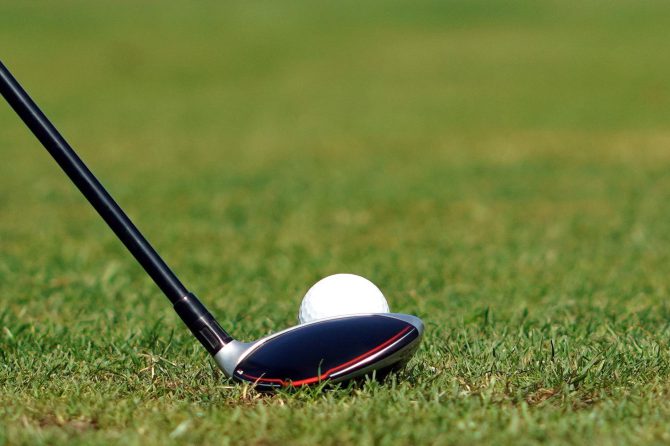John Henry Taylor, a five-time Open Champion, developed a comprehensive approach to golf improvement that encompassed a multifaceted methodology, emphasizing grip, stance, and swing mechanics to enhance precision and accuracy. He also stressed the importance of effective course management strategies, recognizing the impact of decision-making in various playing conditions. Taylor understood the mental aspect of the game, promoting the development of focus, confidence, and resilience to navigate the complexities of golf. his teachings focused on understanding swing dynamics to optimize power and control, thus maximizing ball flight proficiency.
– The Significance of Grip, Stance, and Swing Mechanics in Taylor’s Approach
## The Significance of Grip, Stance, and Swing Mechanics in Taylor’s Approach
John Henry Taylor was known for emphasizing the building blocks of a proficient golf swing: grip, stance, and swing mechanics. These elements are essential for a consistent and powerful golf swing, and Taylor believed that mastering them was the key to success in golf.
This legendary golfer elaborated on the intricacies of each facet. He scrutinized the grip’s positioning and pressure, delineating the influence it held over clubface control and accuracy enhancement. Taylor likewise delved into the mechanics of the golf swing. By meticulously analyzing the sequence of movements involved, he imparted techniques for generating maximum clubhead speed while maintaining accuracy. Taylor underscored the vital role of correct posture and body positioning in achieving an efficient swing, believing that a firm foundation leads to greater consistency.
To further reinforce his teachings, Taylor utilized drills and exercises that targeted specific aspects of the swing. These exercises enabled golfers of varying skill levels to identify and correct swing flaws and refine their techniques. Through these exercises and drills, golfers could cultivate the muscle memory necessary to execute a fluid and powerful golf swing.
– Course Management Strategies for Enhanced Performance
Course Management Strategies for Enhanced Performance
As part of John Henry Taylor’s comprehensive golf improvement approach, course management assumes paramount importance. Strategic thinking is not just for professionals; recreational golfers can benefit from it as well. When planning each shot, the golfer must consider various factors.
Selecting the Right Club
The key to making good shots is choosing the right golf club for the distance and the terrain. Besides distance and lie, wind and hazards also affect club selection.
- For long shots, consider wind and elevation. Uphill shots require less club, while downhill shots need more club.
- For shots over water or bunkers, use more club to ensure carrying the hazard.
- When in doubt, always lean towards the shorter club for greater accuracy.
Aiming Shots
Aiming is critical for accuracy. Factors to consider include the wind’s direction, prevailing contours on the green, and potential hazards.
- Aim away from trees or other obstacles on the line of flight.
- Adjust for elevation changes on the green.
- Consider the wind’s side-effect on the ball’s trajectory.
Navigating Hazards
Hazards demand specific course management techniques to avoid penalties.
- Lay up: Hitting a shorter shot to avoid a hazard, even if it means sacrificing distance.
- Carry over: Using a longer club to clear the hazard, ensuring the ball lands safely on the other side.
- Go around: Playing the ball away from the hazard, then shaping a shot into the green.
– The Impact of Mental Fortitude on Golfing Success
The Impact of Mental Fortitude on Golfing Success
Mental fortitude is a crucial element of golf success. It allows golfers to overcome the numerous mental challenges the sport poses, such as pressure, adversity, and self-doubt. Golfers with strong mental fortitude are better able to maintain focus and concentration, manage their emotions, and make sound decisions under pressure.
Here are some specific ways that mental fortitude can impact golf performance:
- Focus and concentration: Golf requires intense focus and concentration for extended periods of time. Golfers with strong mental fortitude are better able to block out distractions and maintain their focus throughout the round.
- Emotional management: Golf is a game of highs and lows, and it’s important to be able to manage emotions effectively. Golfers with strong mental fortitude are better able to stay positive and composed even when things aren’t going their way.
- Decision-making: Golfers often have to make quick decisions under pressure. Golfers with strong mental fortitude are better able to think clearly and make sound decisions, even when the stakes are high.
Mental fortitude is a skill that can be developed and improved over time. There are a variety of mental exercises and techniques that golfers can use to build their mental toughness.
– Understanding Swing Dynamics for Optimal Power and Control
### Understanding Swing Dynamics for Optimal Power and Control
Swing dynamics refers to the complex interplay of forces and movements that occur during the golf swing. A thorough grasp of these dynamics is essential for optimizing power and control over the ball. John Henry Taylor placed great emphasis on understanding swing dynamics, as it allows golfers to make informed decisions about their swing technique.
One key aspect of swing dynamics is the relationship between clubhead speed and ball speed. Clubhead speed is determined by a combination of factors, including the golfer’s strength, swing plane, and club selection. Ball speed, on the other hand, is affected by clubhead speed, as well as the coefficient of restitution (COR) of the clubface. By understanding the relationship between these two variables, golfers can optimize their swing to generate maximum ball speed without sacrificing control.
Additionally, swing dynamics can help golfers identify and correct swing flaws. For example, a golfer who is struggling with consistency may have a swing that is out of sync. By analyzing the timing and sequencing of their swing, golfers can identify areas for improvement and make adjustments to enhance their overall performance.
– Maximizing Ball Flight Proficiency: Taylor’s Legacy
Maximizing Ball Flight Proficiency: Taylor’s Legacy
Taylor’s unwavering dedication to comprehending swing dynamics resulted in ground-breaking advancements in ball flight proficiency. He emphasized the crucial relationship between swing mechanics, club selection, and course conditions in achieving optimal ball trajectory and distance control.
Key principles within Taylor’s teachings included:
<ul>
<li>Precise clubface alignment to minimize ball spin and promote consistent shot shape.</li>
<li>Rhythm and tempo maintenance for seamless weight transfer and power generation.</li>
<li>Correct clubhead path to ensure desired shot trajectory, whether high, low, or penetrating.</li>
</ul>Through detailed analysis of ball flight patterns, Taylor’s framework empowers golfers with the ability to tailor their swing to specific playing situations. For instance, his principles guide players in selecting appropriate clubs for varying wind conditions, accounting for resistance or assistance to optimize distance and accuracy. Additionally, his emphasis on course management shines through, underscoring the importance of considering hazards, green contours, and lie when formulating an effective shot strategy.
John Henry Taylor’s comprehensive approach to golf improvement was groundbreaking. By focusing on all aspects of the game, from grip and stance to course management and mental toughness, Taylor helped countless golfers improve their skills and enjoy the game more. His legacy as one of the greatest golf teachers of all time is secure, and his methods continue to be used by golfers of all levels today.




